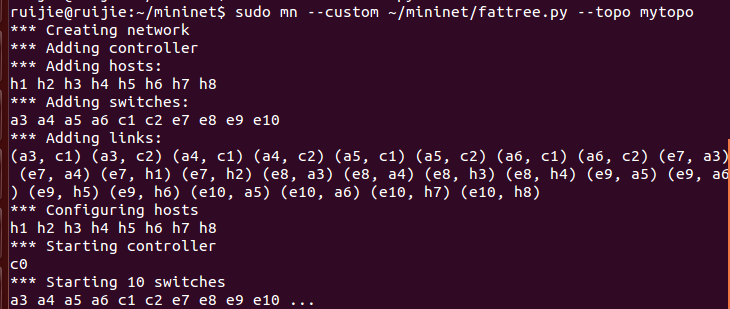SDN第一次上机作业
1.安装mininet
参考链接:http://www.sdnlab.com/15138.html
2.用字符命令生成拓扑,并测试连通性,截图
参考链接:http://www.sdnlab.com/15077.html
拓扑图如下: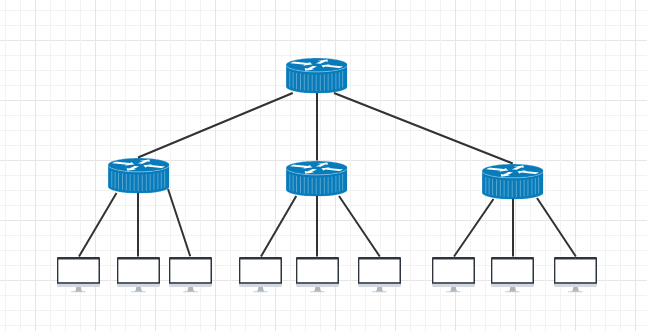
注意:每次要新建拓扑时,需执行以下命令,防止上次操作对本次实验的影响
sudo mn -c
A:
- 生成以上树状拓扑图需用到命令如下
sudo mn --topo tree, fanout=3,depth=2
- 其中fanout表示扇出,即每个交换机下挂载的结点个数,由上图可见fanout=3。
- depth表示深度,即交换机的层数,由上层可见depth=2。
- 测试连通性命令如下
pingall
截图如下
- 生成拓扑
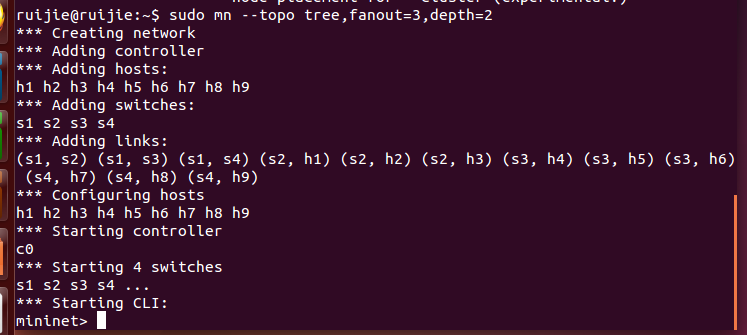
- 测试连通性

3.用可视化界面生成拓扑,并测试连通性,截图
参考链接:http://www.sdnlab.com/15096.html
拓扑图如下: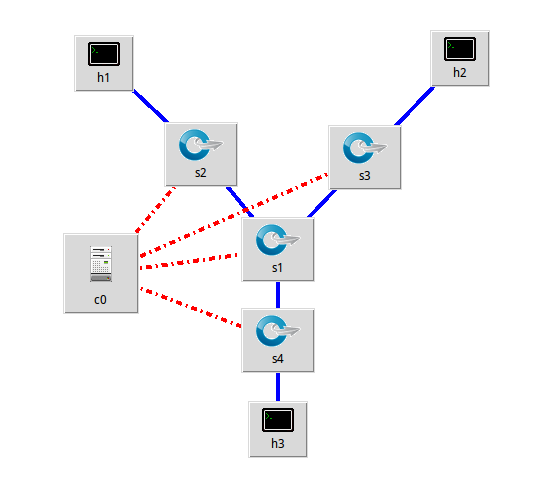
注意:每次要新建拓扑时,需执行以下命令,防止上次操作对本次实验的影响
sudo mn -c
A:
- 进入 ~/mininet/mininet/examples$目录,执行miniedit.py,就会跳出可视化界面。
- 通过拖拉方式生成拓扑如下:
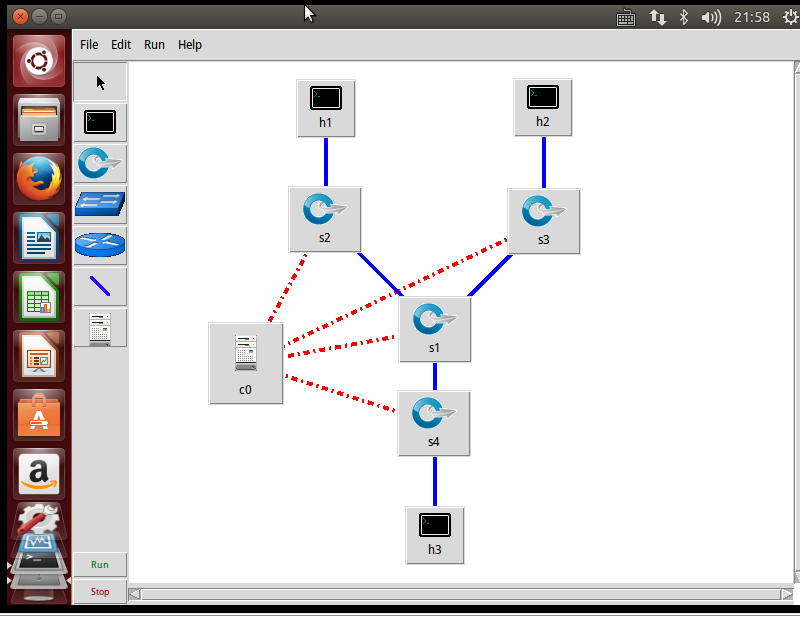
- 根据参考链接设置完IP,以及edit属性后,点击run
输入net命令查看网络拓扑

- 测试连通性

4.用Python脚本生成一个Fat-tree型的拓扑,截图
参考链接:http://www.sdnlab.com/15128.html
拓扑图如下: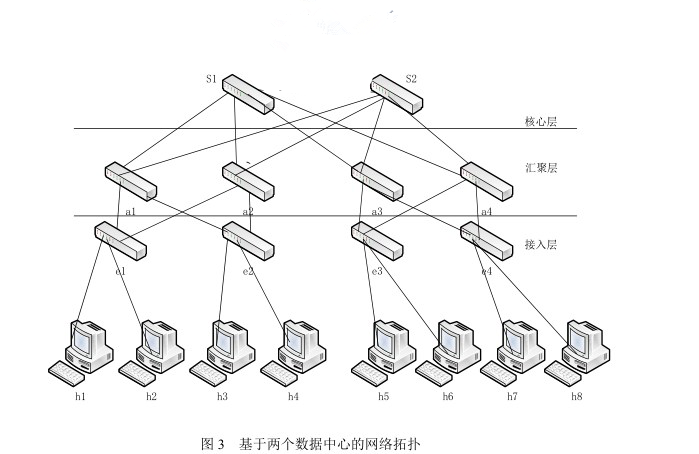
注意:每次要新建拓扑时,需执行以下命令,防止上次操作对本次实验的影响
sudo mn -c
A:
- 代码如下:
#!/usr/bin/python
"""Custom topology example
Adding the 'topos' dict with a key/value pair to generate our newly defined
topology enables one to pass in '--topo=mytopo' from the command line.
"""
from mininet.topo import Topo
from mininet.net import Mininet
from mininet.node import RemoteController,CPULimitedHost
from mininet.link import TCLink
from mininet.util import dumpNodeConnections
class MyTopo( Topo ):
"Simple topology example."
def __init__( self ):
"Create custom topo."
# Initialize topology
Topo.__init__( self )
L1 = 2
L2 = L1 * 2
L3 = L2
c = []
a = []
e = []
# add core ovs
for i in range( L1 ):
sw = self.addSwitch( 'c{}'.format( i + 1 ) )
c.append( sw )
# add aggregation ovs
for i in range( L2 ):
sw = self.addSwitch( 'a{}'.format( L1 + i + 1 ) )
a.append( sw )
# add edge ovs
for i in range( L3 ):
sw = self.addSwitch( 'e{}'.format( L1 + L2 + i + 1 ) )
e.append( sw )
# add links between core and aggregation ovs
for i in range( L1 ):
sw1 = c[i]
for sw2 in a[i/2::L1/2]:
# self.addLink(sw2, sw1, bw=10, delay='5ms', loss=10, max_queue_size=1000, use_htb=True)
self.addLink( sw2, sw1 )
# add links between aggregation and edge ovs
for i in range( 0, L2, 2 ):
for sw1 in a[i:i+2]:
for sw2 in e[i:i+2]:
self.addLink( sw2, sw1 )
#add hosts and its links with edge ovs
count = 1
for sw1 in e:
for i in range(2):
host = self.addHost( 'h{}'.format( count ) )
self.addLink( sw1, host )
count += 1
topos = { 'mytopo': ( lambda: MyTopo() ) }
- 生成拓扑如下
